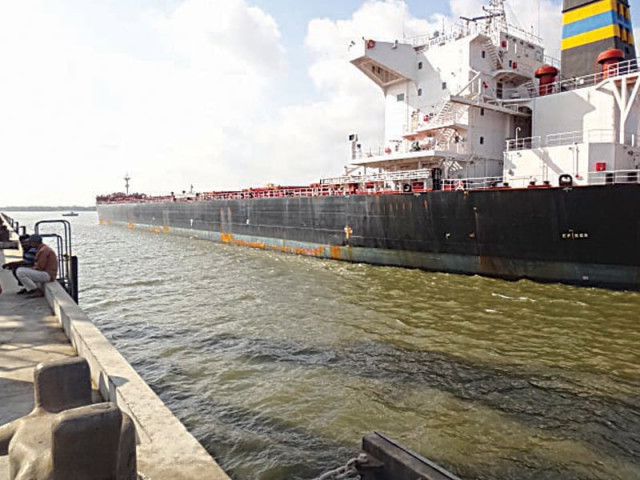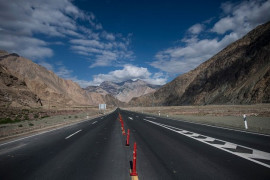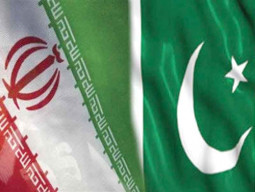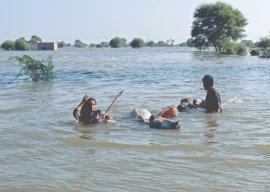
Its transformation from the sole seaport authority of the country overseeing the entire port operations into a landlord entity that lets private contractors build, own and operate large terminals is a recent phenomenon. However, while a large chunk of the port’s business has been taken away by dedicated urea, grain and container terminals established at Port Qasim, KPT still handles over 60% of Pakistan’s total containerised cargo – a ratio KPT has successfully maintained for the past five years.
“Notwithstanding the fact that Pakistan doesn’t lie on the main shipping route, the geographical location makes the Karachi port critical for the transportation of goods to western China, Russia and Central Asian states. The construction of the Pakistan Deep Water Container Port (PDWCP) will enhance our unique advantage further,” said KPT General Manager (Operations) Azhar Hayat - who is also a serving Rear Admiral in the Pakistan Navy - while talking to The Express Tribune.
Inaugurated in April 2009, the new PDWCP will enable KPT to handle ships of 100,000 deadweight tonnage (DWT) having 16 metres of draft, which is the vertical distance between the waterline and the bottom of the ship.
With 30 berths and three oil piers in total, KPT is currently capable of handling freighters of up to 80,000 gross register tonnage (GRT), which represents the total internal volume of a vessel, with the maximum draft of 12.5 metres.
“The development of PDWCP will further boost the volume of trade through Asian Highway Network and Trans-Asian Railway Network,” Hayat said, while referring to international road and railway routes that will likely be put to more efficient use once PDWCP becomes operational.
According to Hayat, upon completion of four berths (phase-I) at PDWCP, the container handling capacity is expected to reach 3.1 million twenty-foot equivalent units (TEUs) per annum. KPT handled 1.545 million TEUs in 2010-11.
“The growth in container throughput is directly linked with the economic condition of the country. Yet, the current growth rate is about 5%. The handling capacity of the Karachi Port will be further enhanced to 5 million TEUs per annum on commissioning of South Asia Pakistan Terminal (SAPTL) at PDWCP,” the KPT chairman said.
With four berths, only one terminal is being planned at PDWCP at present. Future expansion is possible as there is room for 10 more berths.
Currently, two container terminals -- Karachi International Container Terminal and Pakistan International Container Terminal – are operational at KPT. The third container terminal, SAPTL, is being planned at PDWCP, which will enable KPT to cater to the fifth and sixth generation vessels. The four berths with 1,500 metres of quay wall are under-construction and likely to complete in 2013 at an expected cost of $1.2 billion.
Published in The Express Tribune, May 25th, 2012.



















COMMENTS
Comments are moderated and generally will be posted if they are on-topic and not abusive.
For more information, please see our Comments FAQ